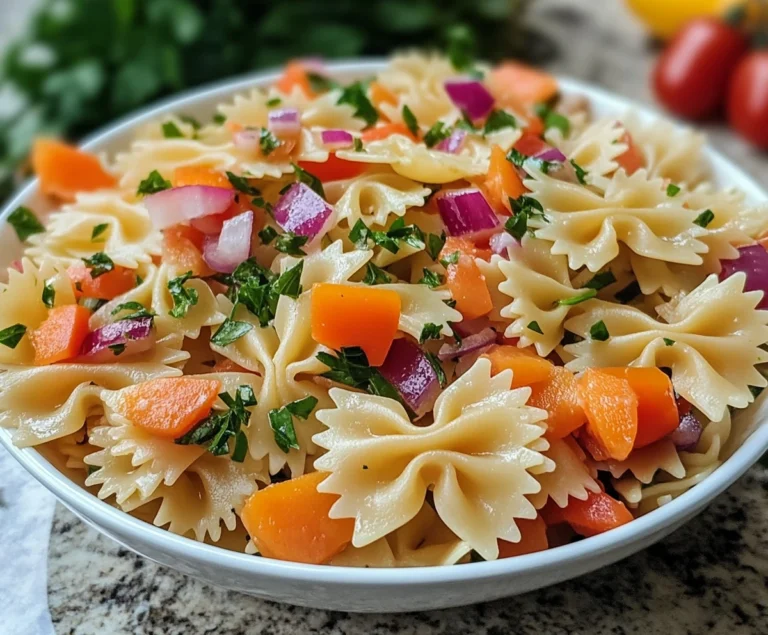What is a good thickener for potato soup?
Potato soup is a beloved comfort food for many, known for its hearty texture and rich, creamy consistency. However, achieving the perfect thickness can be a challenge for both beginner and seasoned cooks alike. The right thickener can elevate a thin and runny soup into a satisfying, creamy masterpiece. Whether you’re looking for a classic thickener like mashed potatoes or something more exotic like cashew cream, this guide will cover all the best ways to thicken your potato soup and create the ideal consistency every time.
In this comprehensive guide, we will explore the types of thickeners, their specific benefits, how they work, and tips to troubleshoot common issues you might encounter in the kitchen. Let’s dive into what makes a perfect thickener and how to achieve that rich and velvety texture in your potato soup.
Why Is a Thickener Important in Potato Soup?
A thickener is any ingredient or agent used to increase the viscosity of a liquid, allowing it to maintain a smooth texture without adding a heavy or gritty feel. Thickeners are important in cooking not just for potato soup but for a variety of dishes, including sauces, gravies, and stews. They give body to the liquid component of the dish while preserving or enhancing the flavor.
When it comes to potato soup, thickening is essential to create that creamy, hearty texture that is synonymous with the dish. Without a proper thickener, potato soup can turn out watery and thin, which diminishes the comforting appeal of the meal. Thickening agents can also help balance the soup by blending flavors more effectively, as a well-thickened soup tends to hold its flavors better than a thin one.
Moreover, thickeners can add nutritional value to the dish. For example, using pureed vegetables or beans not only thickens the soup but also boosts its fiber and vitamin content. On the other hand, rich thickeners like heavy cream or cream cheese contribute to the luxurious, indulgent mouthfeel that many soup lovers crave.
Understanding How Thickeners Work: The Science Behind It
Before delving into specific thickening methods, it’s important to understand how thickeners work. Thickeners typically alter the molecular structure of the soup’s liquid to make it denser and more viscous. This can occur through several processes, depending on the type of thickener you use:
- Gelatinization: This occurs when starches (like flour, cornstarch, or potato starch) absorb liquid and swell when heated, forming a gel-like structure that thickens the soup.
- Emulsification: This involves mixing two liquids that normally wouldn’t combine, like fat and water. Emulsifiers (such as cream or butter) allow these components to blend smoothly, giving the soup a richer texture.
- Hydration: Gums and hydrocolloids, like xanthan gum or guar gum, thicken by absorbing water and expanding. These are often used in gluten-free or low-carb recipes.
- Pureeing: By breaking down the fibers in vegetables or legumes through pureeing, the thicker parts of the vegetable are dispersed into the soup, naturally increasing its viscosity without the need for additional starches or fats.
Understanding these processes will help you choose the most appropriate thickening method for your potato soup and troubleshoot any issues that might arise during the cooking process.
Common Thickeners for Potato Soup: A Breakdown
In this section, we will take a closer look at the different types of thickeners, grouped into categories based on their composition. Each type has its benefits and unique characteristics, so you can select the thickener that best suits your flavor preferences and dietary needs.
1. Starchy Thickeners: The Classic Go-To
Starch-based thickeners are perhaps the most commonly used in potato soup. These thickeners are effective because they work well with the naturally starchy nature of potatoes, enhancing the soup’s body without overpowering its flavor.
Mashed Potatoes
Using mashed potatoes as a thickener is one of the most traditional methods. You can use extra cooked potatoes from the soup itself or cook and mash new potatoes to add to the mixture. Mashed potatoes blend seamlessly into the soup, providing a thicker consistency without introducing a new flavor. This method is especially useful if you want to keep the soup gluten-free or if you are avoiding additional fats.
Here’s how to incorporate mashed potatoes as a thickener:
- Remove a portion of the cooked potatoes from your soup and mash them separately. Once mashed, return them to the soup and stir to integrate.
- Alternatively, boil a few extra potatoes in a separate pot, mash them, and then stir them into the soup.
The benefit of using mashed potatoes is that they keep the flavor consistent while providing a creamy texture. This method is also great for those who want to use a single main ingredient (potatoes) throughout the dish.
Flour or Cornstarch Slurry
A slurry made from flour or cornstarch mixed with cold water is another classic thickening method. This works by suspending the starch in the liquid, which gelatinizes when heated, thickening the soup as it cooks.
When making a slurry:
- Mix a few tablespoons of flour or cornstarch with an equal amount of cold water. Stir thoroughly to avoid lumps.
- Slowly pour the slurry into the soup, stirring continuously over medium heat.
- Allow the soup to cook for a few minutes until it reaches the desired thickness.
Flour and cornstarch are ideal for those who want a neutral thickener that won’t alter the flavor of the soup. Cornstarch, in particular, creates a more translucent finish, while flour tends to make the soup slightly opaque.
Potato Flakes
Instant potato flakes are a convenient and effective way to thicken potato soup quickly. They dissolve easily into the soup and allow you to control the thickness without changing the flavor profile. Potato flakes are particularly useful if you’re short on time or ingredients.
To use potato flakes:
- Add a small amount of instant potato flakes to the soup and stir. Allow them to dissolve before deciding if you need more.
- Potato flakes thicken very quickly, so be cautious about adding too much at once.
Potato flakes are also gluten-free, making them an excellent choice for those with dietary restrictions.
2. Cream-Based Thickeners: Rich and Indulgent
For a more decadent, velvety texture, cream-based thickeners are a great option. These thickeners not only increase the soup’s body but also contribute to a rich and luxurious mouthfeel that is perfect for comfort food.
Heavy Cream
One of the most straightforward ways to thicken potato soup is by adding heavy cream. Cream adds fat to the soup, which emulsifies with the broth and gives the dish a smooth, creamy texture. Heavy cream is ideal for creating an indulgent soup, but it’s important to add it at the right stage to prevent curdling.
Here’s how to use heavy cream:
- Add the cream toward the end of cooking, after the soup has been taken off the heat.
- Stir in a small amount of heavy cream until the desired creaminess is achieved. Be careful not to add too much, as this can make the soup overly rich.
This method works well for those who enjoy a rich, indulgent soup with a creamy finish. However, it may not be the best option for those looking to reduce calories or avoid dairy.
Sour Cream or Cream Cheese
If you’re looking for a thickener that adds both creaminess and a slight tang, consider using sour cream or cream cheese. These ingredients melt smoothly into the soup, creating a thick, velvety texture with a slight bite.
How to use sour cream or cream cheese:
- Mix a few tablespoons of sour cream or cream cheese with a small amount of the soup liquid to temper it. This prevents clumping.
- Gradually stir the mixture back into the soup until it is fully incorporated.
Both sour cream and cream cheese add a unique flavor to the soup, so consider whether the tanginess complements the other ingredients in your recipe.
Cashew Cream
For those looking for a dairy-free alternative, cashew cream is an excellent option. Cashew cream is made by blending soaked cashews with water to create a smooth, creamy liquid. It mimics the texture of heavy cream but without the dairy.
To make cashew cream:
- Soak 1 cup of cashews in water for at least 2 hours or overnight.
- Drain the cashews and blend them with 1 cup of fresh water until smooth.
- Stir the cashew cream into the soup toward the end of cooking.
Cashew cream adds a rich and creamy texture to the soup without the lactose or saturated fats found in dairy products. It’s perfect for vegan or dairy-sensitive individuals looking for a comforting soup.
3. Vegetable-Based Thickeners: Nutritious and Flavorful
Vegetable-based thickeners not only add texture to the soup but also bring additional flavors and nutrients to the dish. These thickeners are ideal for those seeking a healthier alternative to cream or starch-based thickeners.
Pureed Vegetables
One of the most effective and nutritious ways to thicken potato soup is by adding pureed vegetables. Vegetables such as carrots, cauliflower, or extra potatoes can be blended into a smooth puree and stirred into the soup. This method not only thickens the soup but also boosts its nutritional value.
To use pureed vegetables:
- Steam or roast your chosen vegetables until soft.
- Use a blender or food processor to puree the vegetables until smooth.
- Stir the puree into the soup and let it cook until fully incorporated.
Pureed vegetables add both thickness and flavor, making the soup more complex and wholesome. This method is particularly great for adding vitamins and fiber to your meal.
Beans or Lentils
Adding cooked beans or lentils to the soup and blending them into a puree is another healthy and hearty way to thicken potato soup. Beans and lentils are high in fiber and protein, which not only thickens the soup but also makes it more filling.
To thicken soup with beans or lentils:
- Cook your beans or lentils separately until they are soft.
- Blend a portion of the cooked beans or lentils and stir them into the soup.
- You can also leave some whole for added texture.
This method is particularly useful for those following plant-based diets or anyone looking to add extra protein and fiber to their meal.
If you’re looking for other ways to use vegetables in your cooking, check out this Zucchini and Mushroom Recipe that showcases how vegetables can enhance texture and flavor in different dishes.
Lesser-Known Thickeners: Advanced Options
In addition to the more common methods mentioned above, there are several lesser-known thickeners that can elevate your potato soup to new culinary heights. These options may be less traditional, but they offer unique textures and flavors that are worth exploring.
Arrowroot Powder
Arrowroot is a starch extracted from tropical plants, and it is often used as a thickener in gluten-free and paleo cooking. Arrowroot powder is similar to cornstarch, but it has the advantage of creating a clearer, glossier finish.
How to use arrowroot:
- Mix 1-2 tablespoons of arrowroot powder with cold water to form a slurry.
- Stir the slurry into the soup toward the end of cooking. Be careful not to boil the soup, as arrowroot loses its thickening properties when exposed to high heat.
Arrowroot is ideal for those looking to thicken their soup while maintaining a clear and light consistency.
Roux
A roux is a classic French thickening agent made from equal parts flour and fat, typically butter. This method is used in many traditional soups and sauces, and it adds both thickness and a rich, buttery flavor.
To make a roux:
- Melt 2 tablespoons of butter in a pan over medium heat.
- Stir in 2 tablespoons of flour and cook for 2-3 minutes until the mixture turns golden brown.
- Gradually whisk the roux into the soup until it thickens.
Roux is a versatile thickener, but it does add extra calories due to the butter. It’s best used when you want a richer, more indulgent soup.
Egg Yolks
While less common, egg yolks can also be used as a thickener for potato soup. The yolks emulsify the liquid, adding both richness and thickness.
To use egg yolks as a thickener:
- Whisk 1-2 egg yolks in a separate bowl.
- Slowly whisk in a small amount of the hot soup liquid to temper the yolks, preventing them from curdling.
- Gradually stir the tempered yolks back into the soup over low heat, stirring constantly.
Egg yolks create a rich and creamy texture, but they require careful attention to avoid scrambling the eggs.
Commercial Thickeners and Store-Bought Solutions
For a quick and easy fix, commercial thickeners can be lifesavers. However, these should be used sparingly to avoid overpowering the natural flavors of the soup.
Store-Bought Thickeners
There are many instant thickening powders available, such as those made from modified cornstarch or potato starch. These work well in a pinch, but it’s important to check the ingredients for any additives that could affect the soup’s flavor.
- Xanthan Gum or Guar Gum: Xanthan gum and guar gum are popular thickeners in professional kitchens. A tiny amount can thicken a large batch of soup without adding any noticeable flavor. These are often used in gluten-free cooking but can be tricky to work with because they thicken very quickly.
Commercial thickeners are particularly useful when you need to make soup in large batches or for special dietary needs, but it’s always a good idea to use them sparingly.
Common Problems and How to Fix Them
Even with the right thickener, you may encounter some challenges when making potato soup. Here are a few common issues and how to fix them:
Problem 1: Soup Is Too Thin
If your soup is too thin, there are several ways to fix it:
- Add more mashed potatoes or potato flakes.
- Make an additional slurry with flour or cornstarch and stir it into the soup.
- Simmer the soup uncovered to reduce the liquid content.
Problem 2: Soup Is Too Thick
If your soup has become too thick, simply add more liquid. This could be water, broth, or milk, depending on your recipe. Stir it in gradually until the desired consistency is reached.
Problem 3: Soup Has Lumps
Lumps usually occur when a starch-based thickener is not properly mixed. To fix this:
- Use a whisk to break up the lumps.
- If the lumps persist, use an immersion blender to smooth out the soup.
Frequently Asked Questions About Potato Soup Thickeners
Can I Use Flour to Thicken Potato Soup?
Yes, flour is a great thickener. Mix it with cold water to form a slurry before adding it to the soup. Stir continuously while adding it to prevent lumps from forming.
What’s the Best Dairy-Free Thickener?
For a dairy-free option, try cashew cream or pureed vegetables. Both offer a creamy texture without the need for any dairy products.
How Do I Prevent Lumps When Using Cornstarch?
To avoid lumps, always mix cornstarch with cold water before adding it to the soup. Stir the mixture well while incorporating it into the soup.
Can I Use Instant Potato Flakes?
Yes, instant potato flakes are an easy way to thicken potato soup. They dissolve easily and allow you to control the consistency of your soup without altering its flavor.
Conclusion
Choosing the right thickener for your potato soup is essential to achieving the perfect texture. Whether you prefer a starch-based, cream-based, or vegetable-based thickener, the key is to experiment and find what works best for your taste and dietary needs. You can even mix and match thickeners for a richer, more complex soup.
If you’re looking for more inspiration, you can explore other related recipes like why your potato soup may lack flavor, which can help you improve both the taste and consistency of your dish.
By mastering these thickening techniques, you’ll never have to settle for thin or watery potato soup again. Whether you’re cooking for a family gathering or simply looking to perfect your homemade recipe, these tips will ensure your soup is always hearty, creamy, and perfectly thick.







